The Complete Guide to Customer Loyalty in 2025

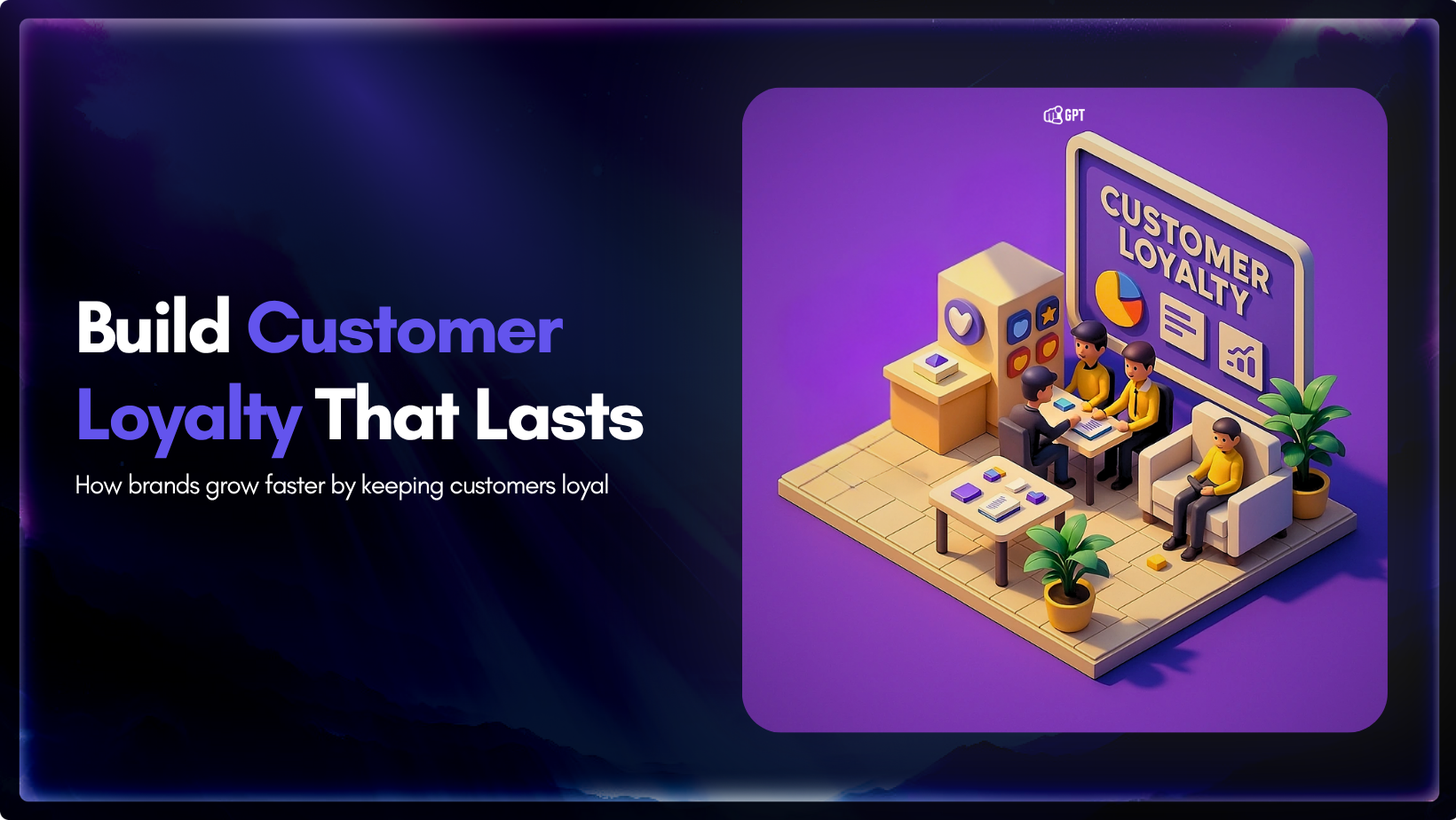
Think about your favourite brand. The one you trust, refer to friends, or buy from time and time again, even when there are less expensive options. That is an example of customer loyalty.
Loyalty is more than just points or discounts in 2025. It means knowing exactly what your customers want and always giving them experiences that meet their expectations. Loyal customers spend more, naturally recommend your goods or services, and stay loyal even when the market changes.
This blog post covers the detail about what customer loyalty means today, why it is important for long-term growth, and how to make a loyalty strategy that fits with what your customers want and value.
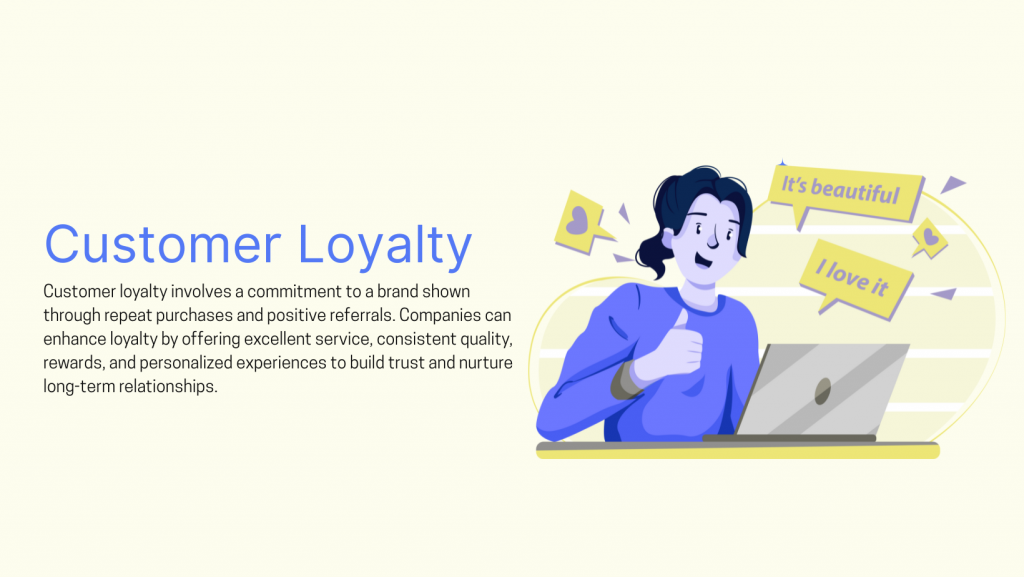
Customer loyalty is when someone consistently chooses your business over others, even if competitors offer similar or lower-priced options. It is not just about repeat purchases. It is about the genuine preference customers have for your brand—because they trust you, feel understood, and value the experiences you deliver.
Loyalty happens when customers believe you offer something beyond products or services. It is an emotional connection built through positive interactions, reliable quality, and personalised care. For example, someone might drive extra kilometres for their favourite coffee shop, simply because they like the service and atmosphere, even if another cafe is closer or cheaper.
When customers become loyal, they willingly recommend you to their family, friends, or colleagues, helping your business grow naturally through word-of-mouth. This kind of loyalty is powerful because it leads to stable, long-term relationships that sustain your business growth, even when market trends shift or new competitors appear.
Businesses use various types of loyalty programs and approaches to build strong customer relationships. Here are common examples:
Beyond these, some programs combine multiple approaches, known as hybrid loyalty programs. An omnichannel approach ensures a consistent experience across all customer touchpoints, whether online, in-store, or through a mobile app. An all-in-one program might combine various rewards or features into a single, comprehensive offering.
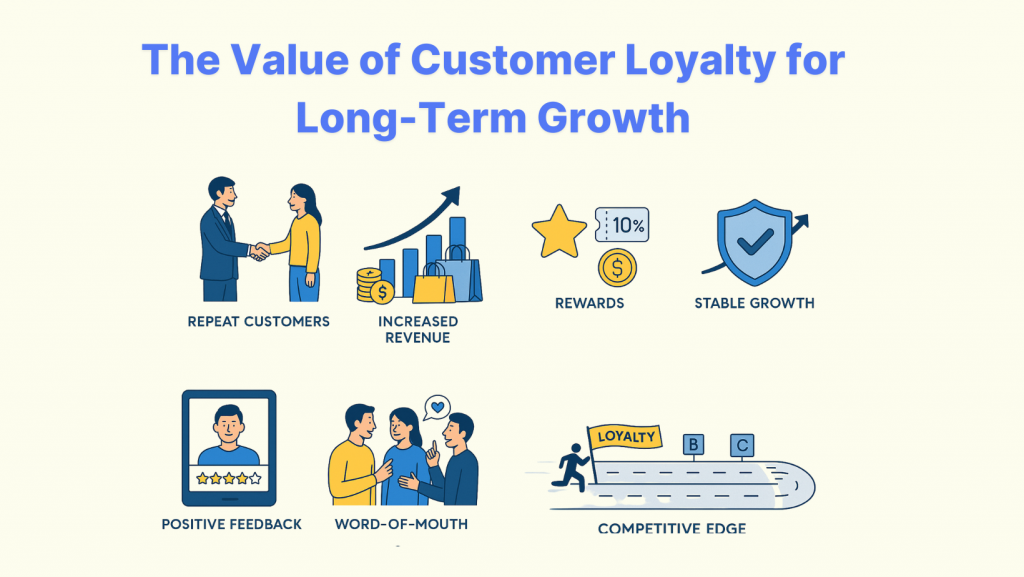
In 2025, customer loyalty is a core driver of business success. Here is why:
The average customer is a member of over ten loyalty programs, showing how common and expected these are. Over half of consumers (51.05%) value convenience and rewards, underscoring the need for well-designed programs.
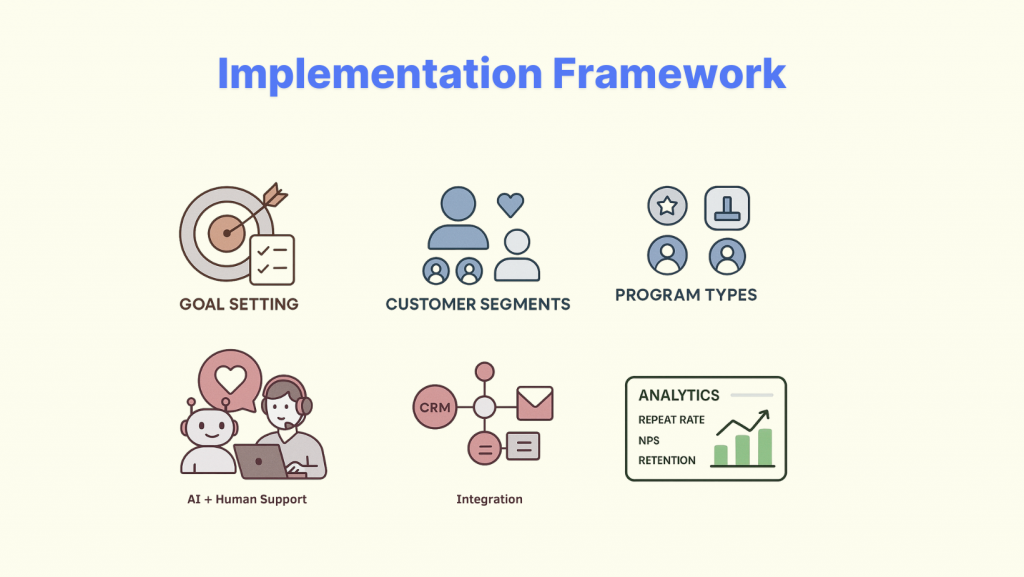
Executing a customer loyalty program is not just about rewards. It’s about creating consistent value for the customer at every step. Here’s a clear framework to help you implement a strategy that aligns with your business goals.
Start with outcomes. Are you aiming for more repeat purchases, higher lifetime value, referrals, or better satisfaction scores? Set measurable targets. Your loyalty strategy should be built around these goals, not the other way around.
Use purchase history, feedback, and behavioural data to build real customer profiles. Identify what matters most to each group—speed, price, service quality, or emotional connection. This helps you personalise offers and rewards based on real needs rather than assumptions.
Match your program type with both your goals and customer expectations. You may choose:
The right structure depends on your audience’s habits and what motivates action.
Running a scalable program requires tools that adapt in real-time. AI tools like YourGPT allow you to:
This creates a consistent and personalised loyalty experience at scale.
If AI is part of your program, train it on your internal FAQs, product docs, and customer queries to make it useful from day one. At the same time, your human support team should know:
Combining human insight with AI support builds trust and efficiency.
To ensure smooth operations, your loyalty program should connect with:
YourGPT supports direct integrations with tools you need, making this step easier to implement.
Begin with a focused rollout or pilot campaign. Track performance using loyalty KPIs such as:
Use feedback and performance data to refine your loyalty strategy over time. Success depends on learning what works and adjusting, not just setting and forgetting.
A loyalty program creates value only when it delivers measurable results. Tracking specific metrics helps you understand what’s working and where to optimise.
This tells you how many customers stayed with you over a given period. A rising rate indicates your program is helping you keep customers for longer.
Customer Retention Rate (%) = [(Customers at End of Period − New Customers) ÷ Customers at Start of Period] × 100
This shows the percentage of customers who make more than one purchase. A growing number here reflects increased loyalty and program engagement.
Repeat Purchase Rate (%) = (Number of Customers with More Than One Purchase ÷ Total Customers) × 100
CLTV helps estimate the total revenue a single customer will bring to your business. Higher CLTV means your loyalty efforts are driving long-term gains.
CLTV = Average Order Value × Purchase Frequency × Customer Lifespan
This metric shows how often existing customers refer others. Loyalty programs that offer referral rewards often see higher rates of new customer acquisition.
Referral Rate (%) = (Number of Referred Customers ÷ Total Customers) × 100
NPS measures how willing your customers are to recommend your brand. It’s a strong indicator of customer sentiment and brand trust.
NPS = % Promoters − % Detractors
CSAT captures customer feedback after specific interactions. It reflects how well your team or AI chatbot is handling user needs.
CSAT (%) = (Number of Satisfied Customers ÷ Total Survey Responses) × 100
Employee satisfaction often influences CSAT. Empowered support teams deliver better experiences.
These are participation and usage metrics, including:
Tracking engagement helps you refine your program design based on how users interact.
Effective strategies for building customer loyalty in 2025:
Even well-designed loyalty strategies can fail if a few key areas are overlooked. Avoiding these common mistakes will help protect your investment and improve customer outcomes.
Customers expect to be treated as individuals. A one-size-fits-all loyalty program feels outdated and easy to ignore. In 2025, personalisation is not a bonus; it is the baseline. Tools like YourGPT let you train AI agents using your own data so every interaction feels relevant, timely, and aligned with each customer’s needs.
If customers don’t understand how to earn or use rewards, they will stop trying. Confusing tiers, vague rules, or hidden terms can ruin participation. Keep the structure simple, transparent, and rewarding from the start.
A loyalty program that doesn’t connect with your CRM, support tools, or marketing channels creates a disjointed experience. This leads to missed data, missed opportunities, and frustrated customers. Integrated systems enable smarter automation and more consistent service. For example, YourGPT AI agents work across channels and sync with your existing platforms to close this gap.
Loyalty works both ways. Asking for feedback is not enough—what you do with it matters more. If customers see their input ignored, they stop sharing. Go beyond basic surveys. Use tools that help you understand patterns in sentiment, complaints, and praise. Then act on that insight to make real improvements.
If your program only gives points for purchases, you’re limiting its value. Today’s customers want to feel appreciated—not just paid for. Offer recognition for non-transactional actions such as writing reviews, sharing feedback, attending webinars, or being part of your community. The goal is to build emotional loyalty—not just transactional repetition.
The response should be smooth whether a user is speaking with your AI chatbot or your support staff. Consumers only see your brand; they don’t distinguish between your channels. Make sure the tone, accuracy, and helpfulness of your AI match those of your human team. Businesses can keep all customer interactions consistent by using tools like YourGPT AI.
Loyalty starts with your team. Even the best-designed program will fall short if your employees aren’t engaged. When staff feel unsupported or disconnected, it reflects in how they treat customers. Equip them with the right tools, offer proper training, and create a work environment that values their contribution. When employees feel supported, better service follows naturally.
The majority of your clients do everything on their phones. You will quickly lose their interest if your loyalty program isn’t designed to be mobile-friendly—that is, simple to sign up for, use, and redeem on smartphones. Mobile access is required, not optional, in 2025. Not just on a desktop, your program should function flawlessly wherever your clients are.
Customer loyalty is earned through consistency, trust, and a clear understanding of what people really care about. It is not just about points or rewards—it’s about making customers feel valued every time they interact with your brand.
In 2025, that means going beyond the basics. People stay loyal when the experience feels personal, helpful, and easy. Whether it is a smooth support interaction, a thoughtful reward, or a fast answer when they need it—small moments create lasting impact.
Tools like YourGPT make this easier by helping businesses offer fast, accurate, and personalised support across channels. When customers feel understood and taken care of, they come back on their own—not because they are pushed, but because they trust you.
Loyalty is not a one-time effort. It is something you build by showing up the right way, again and again.
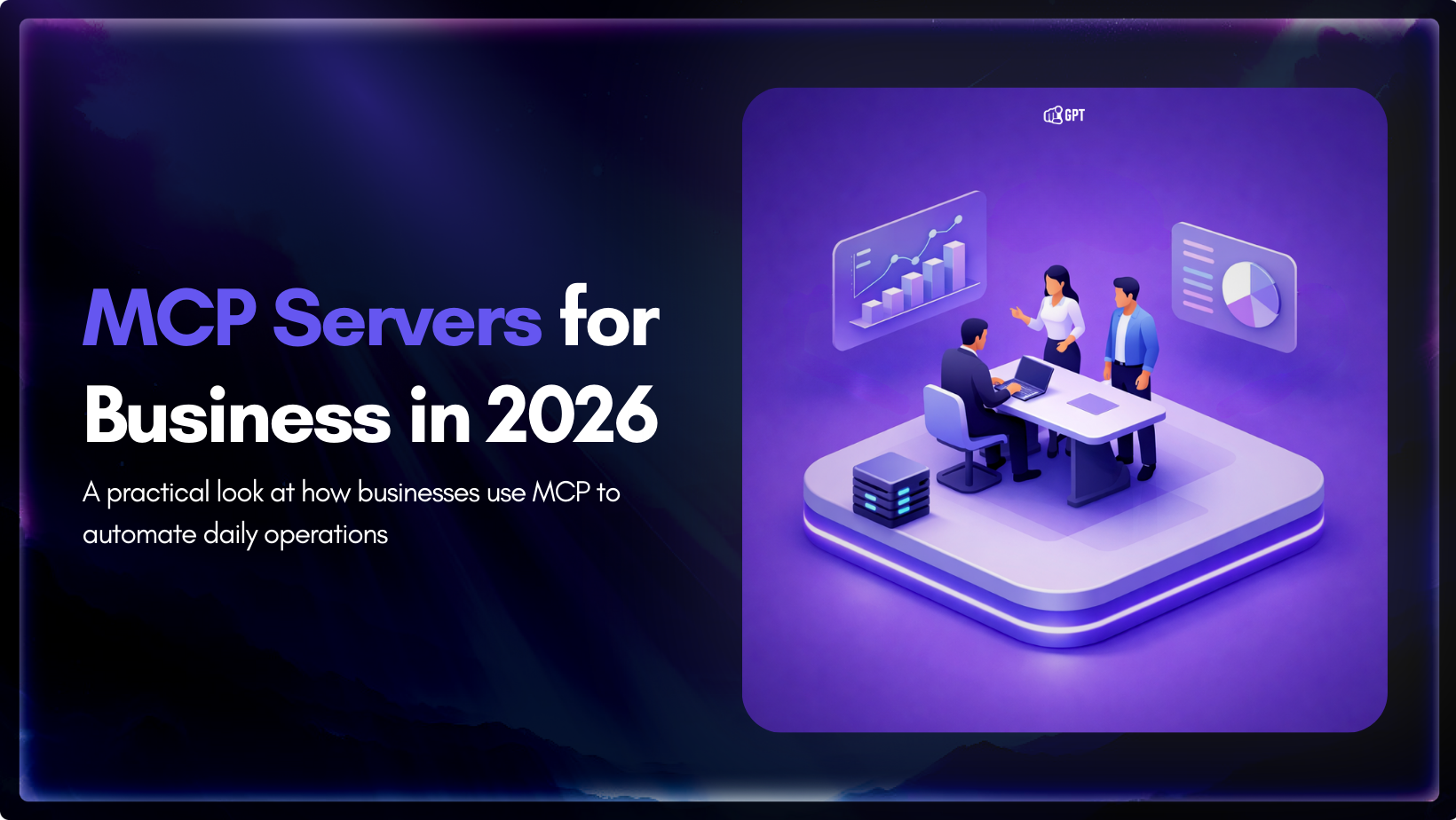
Growth-focused teams move faster when their tools work together instead of competing for attention. Modern development depends on multiple systems to ship code, review changes, monitor services, and access data. Each system serves a purpose, but routine work often means moving between dashboards, scripts, and internal tools. These small transitions shape how consistently a team […]

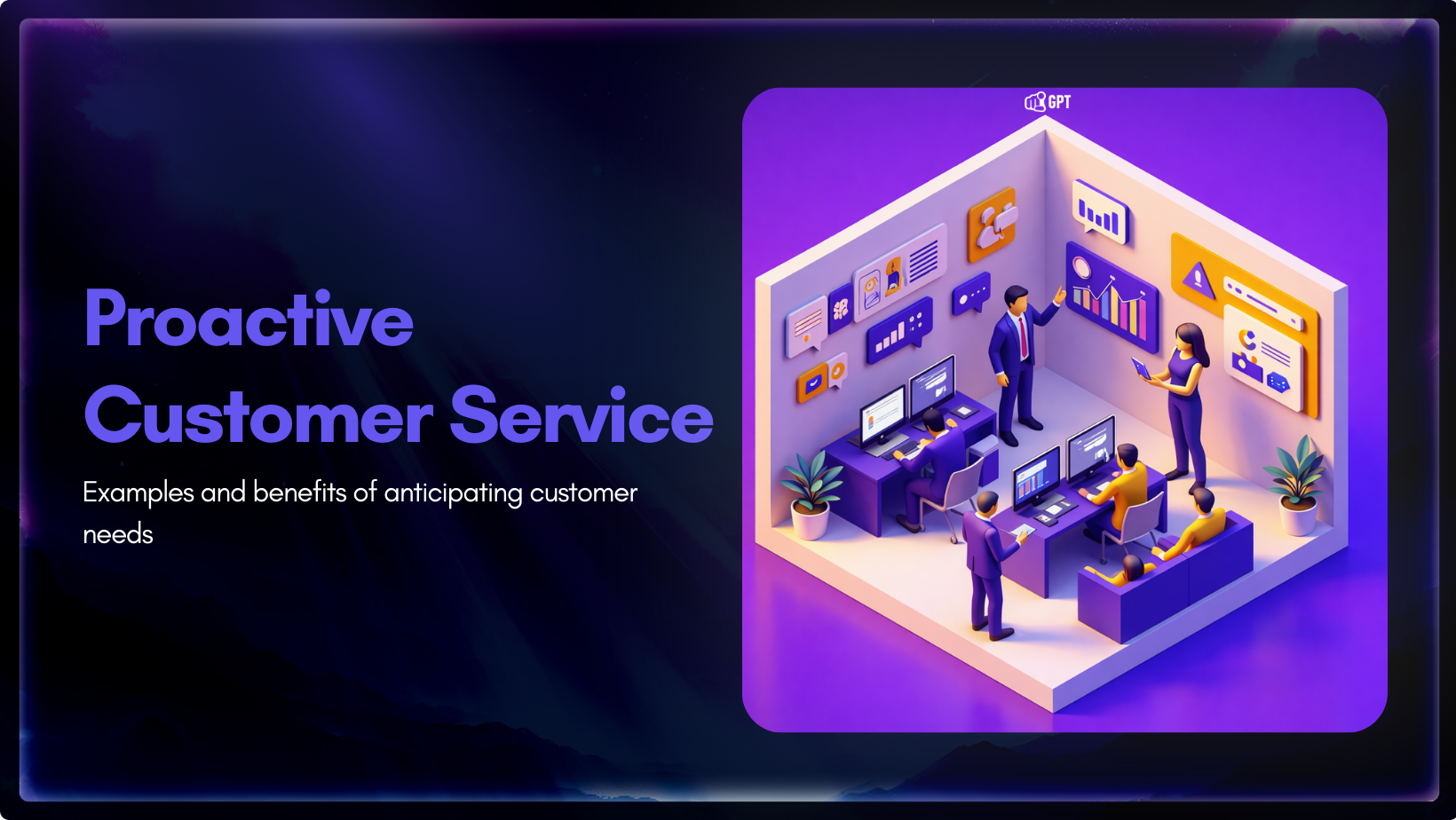
Most customer service moments begin long before a ticket is created. Something feels off. A payment does not go through. A delivery update stops moving. A user gets stuck at the same step and tries again. Customers usually pause, check, retry, and wait before they decide to ask for help. Proactive customer service works inside […]

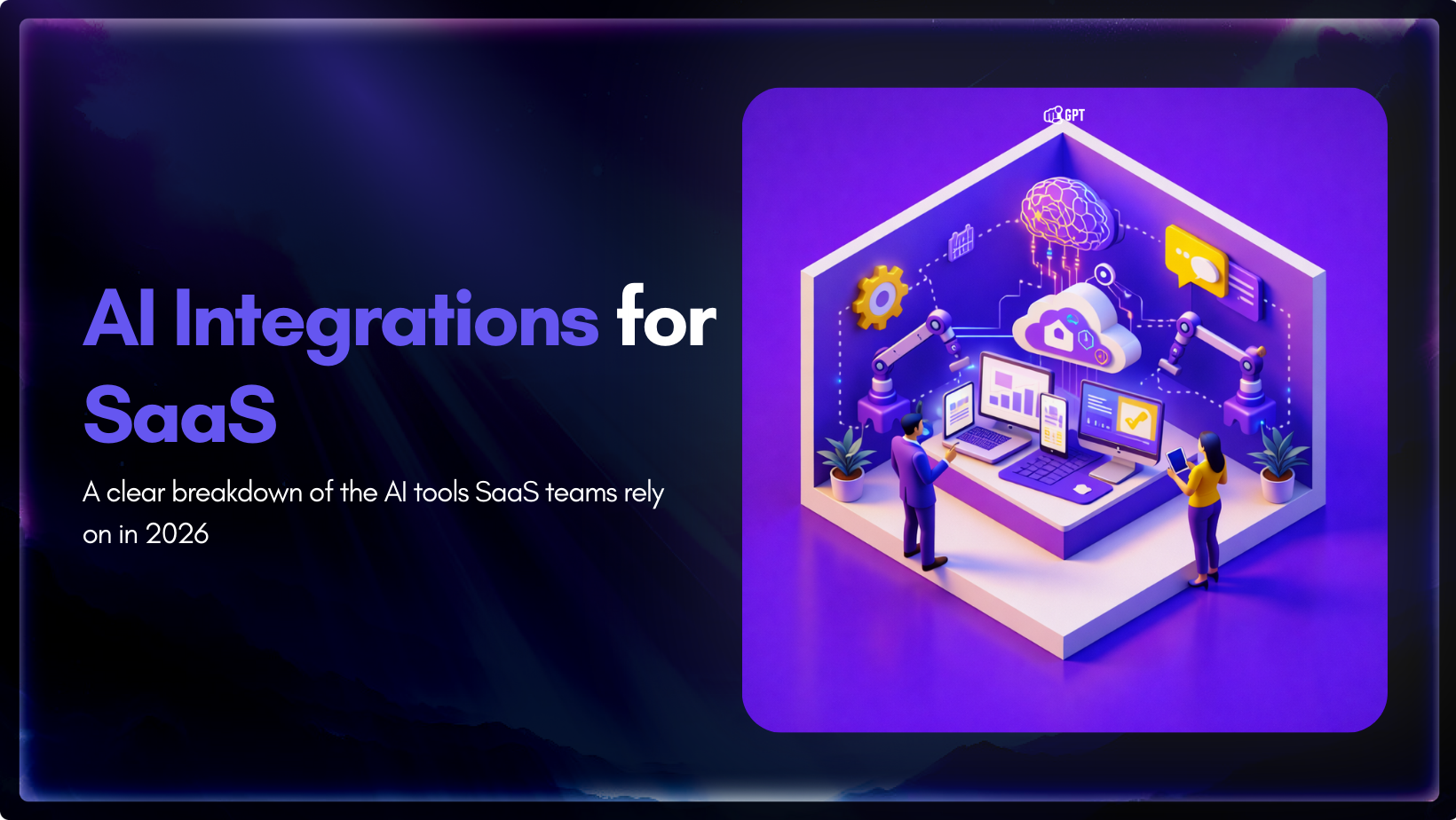
AI has become a core part of how modern SaaS products are built and delivered. In 2026, customers expect intelligent assistance to be available throughout their journey, from onboarding and everyday product usage to support and account management. Inside SaaS teams, AI is increasingly used to speed up workflows, reduce repetitive tasks, and improve how […]

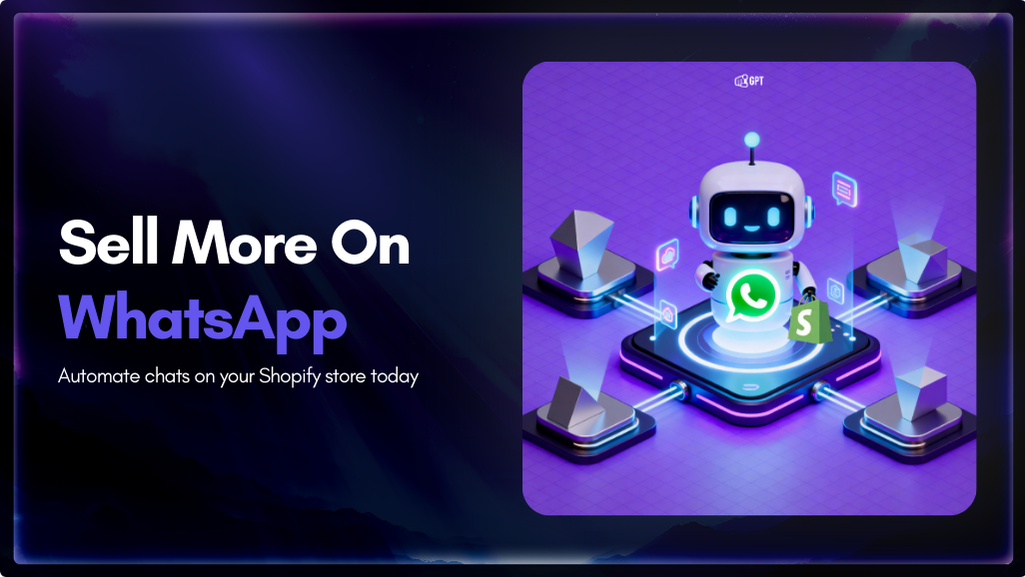
Shopify stores often use a chatbot on their website to handle product questions, order updates, and support. But customers also message on WhatsApp expecting the same quick answers. Most of them already use WhatsApp throughout the day, so reaching out there feels natural. A chatbot that works across both channels responds in seconds, guides purchase […]

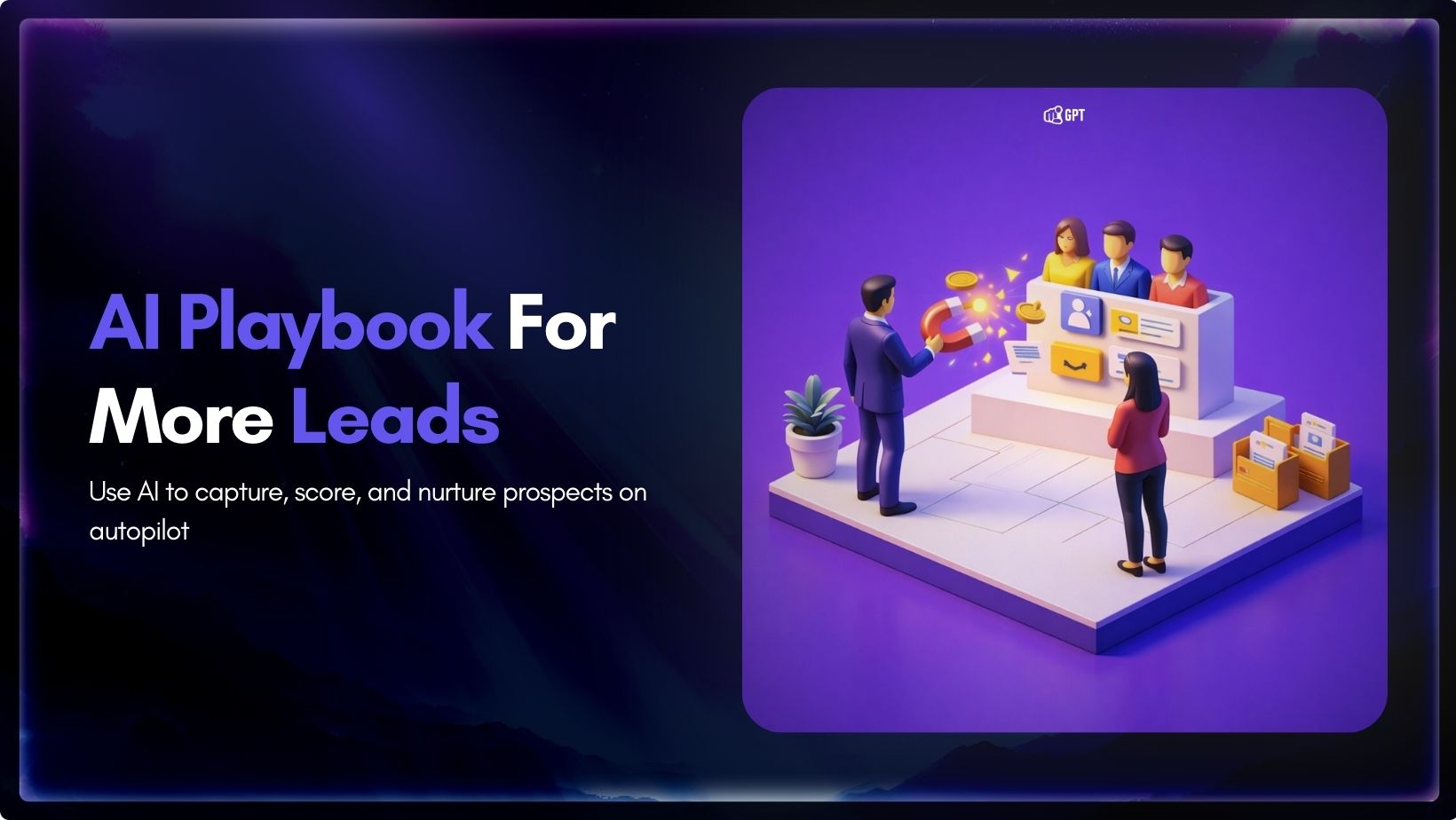
Most businesses do not struggle to generate leads. They struggle to know which ones are worth acting on. Forms get filled, DMs arrive, emails are opened, and chats happen across multiple tools. Some prospects convert. Most do not. The real problem is that there is no reliable way to tell, early enough, which signals actually […]

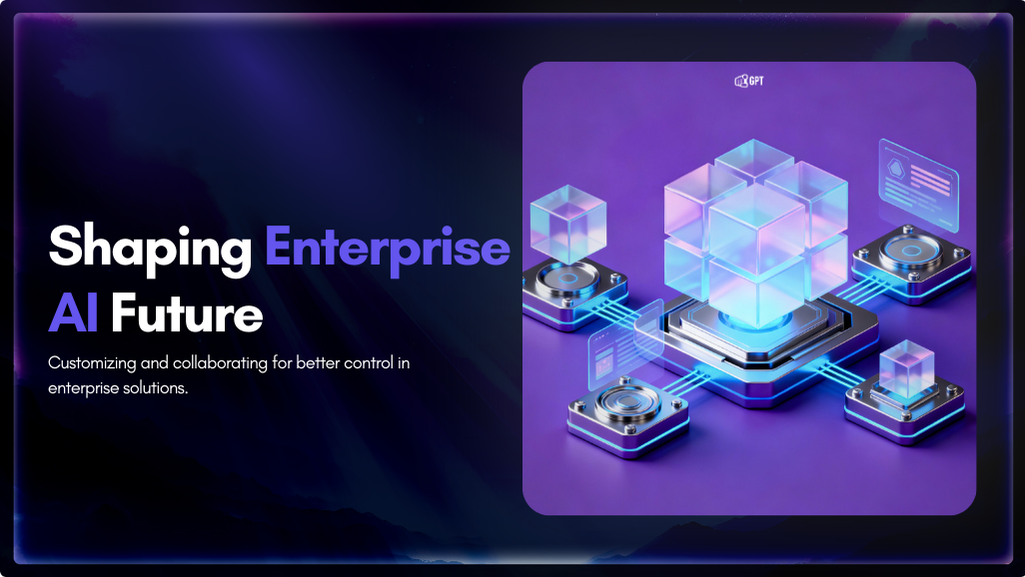
Artificial Intelligence has advanced quickly over the past five years, moving from an experiment to a standard component of modern business. AI has become a central part of enterprise strategy. 88% of organizations are now using AI. This figure has increased from 78% the year before. This transformation is reshaping how companies run, communicate, and […]
